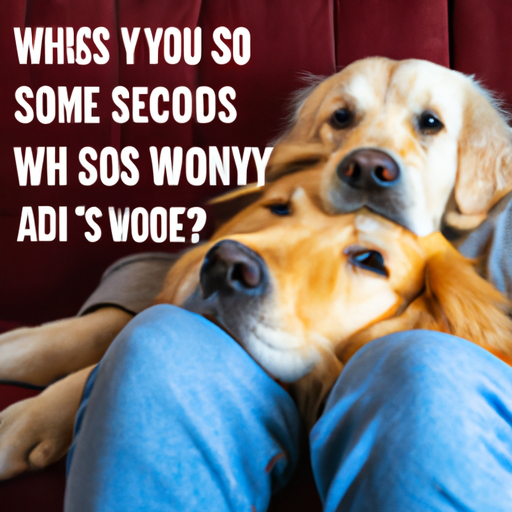1. Understanding Canine Affection
You might have noticed, your canine companion is often bounding with joy, wagging its tail at your slightest glance, or simply curling up next to you on the couch. This affection is a fundamental aspect of a dog’s nature.
Dogs are inherently social animals. This socialization is an inherent trait, passed down from their wolf-like ancestors. These ancestors lived in packs, where cooperation and communication were key for survival. This social nature has been further nurtured over the thousands of years dogs have been domesticated, leading to the affectionate creatures we know today.
The Science Behind Canine Affection
| Hormone | Role |
|---|---|
| Oxytocin | Promotes feelings of love and bonding |
| Serotonin | Contributes to feelings of happiness and well-being |
| Dopamine | Involved in the reward and pleasure centers of the brain |
These hormones are released in both dogs and humans during positive interactions, strengthening the bond between the two.
2. The Significance of Human-Dog Bond
Your dog’s affection isn’t just about their inherent social nature. It’s about the unique bond they share with you. Dogs have evolved alongside humans for thousands of years, and during that time, they’ve developed a special relationship with us.
The Evolution of the Human-Dog Relationship
- Early domestication: Dogs were likely first domesticated for practical purposes, such as hunting and protection.
- Development of emotional bonds: Over time, humans began to notice the emotional benefits of keeping dogs, such as companionship and loyalty.
- Modern-day pets: Today, dogs are often considered part of the family, with strong emotional bonds formed between dogs and their owners.
3. How Dogs Show Affection
While wagging tails and enthusiastic greetings are obvious signs of a dog’s affection, there are several other ways dogs express their love.
- Licking: Dogs often lick the people they love, a behavior that stems from their puppyhood when their mothers would lick them to groom them and show care.
- Leaning: If your dog leans against you, it’s often a sign they’re seeking comfort and affection.
- Eye contact: When your dog looks into your eyes, they’re often trying to show their love and trust.
4. How to Foster Affection in Dogs
While dogs are naturally affectionate, there are things you can do to foster their affectionate behavior.
- Spend quality time with your dog: This could be through play, training, or simply sitting together.
- Be consistent and patient: Dogs thrive on routine and predictability. Being consistent in your interactions with your dog will help them feel secure and loved.
- Provide positive reinforcement: Reward your dog for displaying affectionate behavior. This could be through treats or simply verbal praise.
5. FAQ
Q: Are all dogs naturally affectionate?
A: While dogs are generally social and affectionate creatures, the level of affection can vary based on the dog’s breed, personality, and upbringing.
Q: How can I tell if my dog is happy?
A: A happy dog will often have relaxed body language, show enthusiasm for play and interaction, and display affectionate behaviors like wagging their tail or licking you.
Q: Why does my dog follow me everywhere?
A: This behavior, known as ‘shadowing’, is often a sign of your dog’s affection and loyalty. However, excessive shadowing can also be a sign of separation anxiety.
Q: What if my dog isn’t showing affection?
A: If your dog isn’t showing affection, it may be due to stress, illness, or discomfort. It’s always best to consult with a vet if you notice any sudden changes in your dog’s behavior.
In conclusion, the affection offered by dogs is a unique blend of their inherent social nature and their deep bond with humans. It’s a testament to the thousands of years of companionship between our two species, a bond that can be nurtured and cherished. It’s one of the many reasons why dogs are truly man’s best friend.



